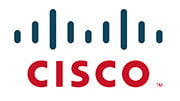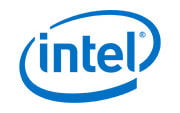This five-day instructor-led course provides students with the knowledge and skills to maintain a Microsoft SQL Server 2014 database. The course focuses on teaching individuals how to use SQL Server 2014 product features and tools related to maintaining a database.
Note: This course is designed for customers who are interested in learning SQL Server 2012 or SQL Server 2014. It covers the new features in SQL Server 2014, but also the important capabilities across the SQL Server data platform.
Audience profile
The primary audience for this course is individuals who administer and maintain SQL Server databases. These individuals perform database administration and maintenance as their primary area of responsibility, or work in environments where databases play a key role in their primary job.
The secondary audience for this course is individuals who develop applications that deliver content from SQL Server databases.
Prerequisites
This course requires that you meet the following prerequisites:
<ul
</ul
After completing this course, students will be able to:
<ul
</ul
Course Outline
Module 1: Introduction to SQL Server 2014 Database Administration
This module introduces the Microsoft SQL Server 2014 platform. It describes the components, editions, and versions of SQL Server 2014, and the tasks that a database administrator commonly performs for a SQL Server instance.
Lessons
<ul
</ul
Lab : Using SQL Server Administrative Tools
After completing this module, you will be able to:
<ul
</ul
Module 2: Installing and Configuring SQL Server 2014
This module explains how to assess resource requirements for SQL Server 2014 and how to install it..
Lessons
<ul
</ul
Lab : Installing SQL Server 2014
After completing this module, you will be able to:
<ul
</ul
Module 3: Working with Databases and Storage
This module describes how data is stored in databases, how to create databases, how to manage database files, and how to move them. Other tasks related to storage, include managing the tempdb database and using fast storage devices to extend the SQL Server buffer pool cache, are also discussed.
Lessons
<ul
- </ul
Lab : Managing Database Storage
After completing this module, you will be able to:
<ul
</ulModule 4: Planning and Implementing a Backup Strategy
In this module, you will consider how to create a backup strategy that is aligned with organizational needs, and learn how to perform the backup operations required by that strategy.
Lessons
<ul
</ul
Lab : Backing Up SQL Server Databases
After completing this module, you will be able to:
<ul
</ulModule 5: Restoring SQL Server 2014 Databases
In this module, you will see how to restore user and system databases and how to implement point-in-time recovery.
Lessons
<ul
</ul
Lab : Restoring SQL Server Databases
After completing this module, you will be able to:
<ul
</ulModule 6: Importing and Exporting Data
In this module, you will briefly explore tools and techniques so that you can import and export data to and from SQL Server.
Lessons
<ul
</ul
Lab : Importing and Exporting Data
After completing this module, you will be able to:
<ul
</ulModule 7: Monitoring SQL Server 2014
This module explains how to use three of the most commonly used tools: Activity Monitor, dynamic management views and functions (DMVs and DMFs), and Performance Monitor.
Lessons
<ul
</ul
Lab : Monitoring SQL Server 2014
After completing this module, you will be able to:
<ul
</ulModule 8: Tracing SQL Server Activity
This module describes how to use SQL Server Profiler and SQL Trace stored procedures to capture information about SQL Server, and how to use that information to troubleshoot and optimize SQL Server workloads.
Lessons
<ul
</ul
Lab : Tracing SQL Server Workload Activity
After completing this module, you will be able to:
<ul
</ulModule 9: Managing SQL Server Security
n this module, you will be learn about the core concepts on which the SQL Server security architecture is based, and how to manage security at the server and database levels.
Lessons
<ul
</ul
Lab : Managing SQL Server Security
After completing this module, you will be able to:
<ul
</ulModule 10: Auditing Data Access and Encrypting Data
This module describes the available options for auditing in SQL Server, how to use and manage the SQL Server audit feature, and how to implement encryption.
Lessons
<ul
</ul
Lab : Auditing Data Access and Encrypting Data
After completing this module, you will be able to:
<ul
</ulModule 11: Performing Ongoing Database Maintenance
his module describes common database maintenance tasks that a DBA must perform, and demonstrates how to automate these tasks using maintenance plans.
Lessons
<ul
</ul
Lab : Performing Ongoing Database Maintenance
After completing this module, you will be able to:
<ul
</ulModule 12: Automating SQL Server 2014 Management
This module describes how to use SQL Server Agent to automate jobs, how to configure security contexts for jobs, and how to implement multi-server jobs.
Lessons
<ul
</ul
Lab : Automating SQL Server Management
After completing this module, you will be able to:
<ul
</ulModule 13: Monitoring SQL Server 2014 by Using Alerts and Notifications
This module covers the configuration of database mail, alerts, and notifications.
Lessons
<ul
</ul
Lab : Monitoring SQL Server by Using Alerts and Notifications
After completing this module, you will be able to:
<ul
</ul






























